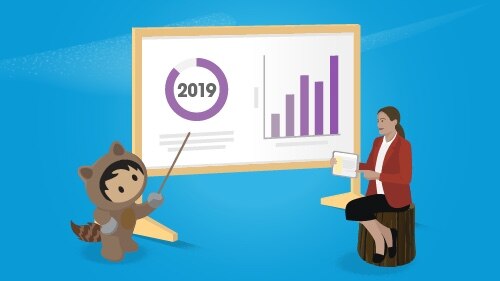B2B commerce professionals are undergoing a reinvention — to focus more on digital customer engagement and service along with sales. This is driving growth in global B2B ecommerce, which Statista says will exceed $12 trillion in 2019, over six times larger than the B2C ecommerce market. Against this backdrop, I thought it would be a good time to reflect on 2019 and share what to expect in 2020.
B2B commerce trends in 2019
Several important trends gained traction in 2019. The most notable? The emergence of service as a motivating factor for companies and B2B customers’ embrace of digital commerce. This has resulted in a whole new wave of compelling B2B customer and partner portals. When B2B companies evaluate ecommerce needs from an end-user perspective, many find they need to deliver streamlined digital support from their whole online ecosystem. This often means they need to replace siloed legacy systems to include product discovery, pricing, and service into a single easy-to-use place.
Headless commerce in B2B
A second B2B trend — headless commerce — has traditionally been in B2C. But there’s a big difference in how headless is applied in B2B; brands aren’t looking at headless primarily to drive entire sites or app experiences. Instead, B2B companies expect certain aspects of commerce to be delivered via headless, so they can invest and differentiate in customer experience and their digital product offerings. They’re also leaning on platform providers to deliver more SaaS technology, preserving agility in the long run. This matters a lot in B2B — while aspects of a digital experience can benefit from headless, there are also approval workflows, payment complexities, and legal terms and acknowledgments that benefit from streamlined, out-of-the-box experiences that are always kept up to date.
B2B and QTC: Joining at the hip
We finally see the early stages of what will inevitably become much tighter alignment between B2B commerce platforms and quote-to-cash (QTC) solutions. Traditional QTC solutions focus on supporting field rep sellers in negotiating and closing complex deals. In most companies, that’s a different technology stack than for ecommerce. Maintaining complex pricing and discount logic across multiple systems can be a burden, which can delay or slow B2B commerce adoption plans. Now that organizations can have both B2B and CPQ and billing on the same platform, more companies are exploring opportunities for this alignment. This will likely become one of the more dominant stories in B2B commerce for the foreseeable future as all modes of commerce become more unified.
How to succeed in B2B commerce in 2020
Looking to 2020, there will be a continued focus on reducing the cost to serve customers and partners, while providing them with engaging digital experiences. I anticipate this particularly among industrial segments in need of more organic growth within an overall environment of budgetary restraint. There will also be a consolidation of technology with far fewer piecemeal solutions as many B2B organizations recognize that their CRM, service, and commerce apps have to be in sync or they will be held back. Any customer-facing technology that’s not connected to some other customer-facing technology will be considered far less useful in delivering top-shelf customer experience.
In terms of best practices, some B2B companies understandably struggle to adopt an ecommerce mindset. When you’re just starting on the road to ecommerce, it’s important to establish a governance and steering function above ecommerce that’s reflective of the entire customer experience. One of the most common mistakes I see is companies having one isolated team that drives sales through ecommerce. Commerce must be integrated into and connected with service, sales, and channel organizations. It’s important to have an ecommerce team to manage commerce operations, but the governance piece needs participation from all stakeholders. In other words, a complete governance team should include leaders from customer service and support, field sales, distribution and partner sales, in addition to IT and traditional business stakeholders. You have to consider how ecommerce fits into all other channels, and the easiest way to do that is to drive active participation in the program from all key customer-facing disciplines when you start the journey.
Another best practice is to start small. It’s easier to start your ecommerce journey when you’re starting with a limited number of customer segments, for example, small businesses in a particular territory, or perhaps a whole geography for an emerging market. Today’s technology makes it easier to target segments and allow certain customers to do certain things. It’s then possible to have a very focused rollout, and still make sure you’ve got the organizational ability to adjust other channels alongside ecommerce. The limited initial scope also makes it a lot easier to document business process changes for traditional sellers and service channels and fine-tune them in the initial customer group so that future rollouts can benefit from new processes as well.
Learn more about the state of B2B commerce.




























